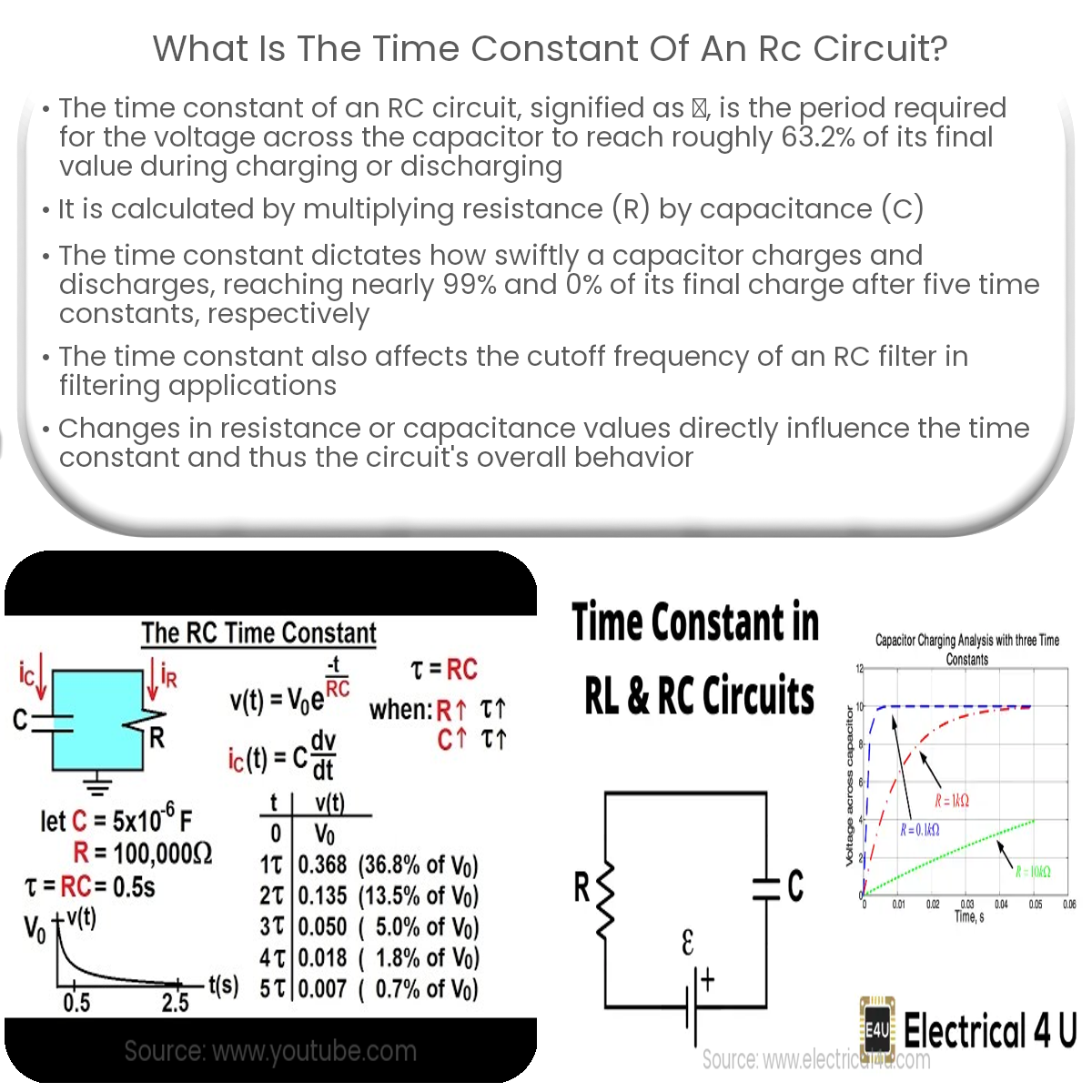The time constant of an RC circuit is calculated as the product of resistance (R) and capacitance (C), represented as τ = RC. It determines charging and discharging rates.
Understanding the Time Constant of an RC Circuit
The time constant of an RC circuit is an important parameter that characterizes the behavior of a resistor-capacitor (RC) circuit. It is defined as the time it takes for the voltage across the capacitor to charge or discharge to approximately 63.2% of its initial or final value.
Calculating the Time Constant
In an RC circuit, the time constant (τ) is calculated by multiplying the resistance (R) by the capacitance (C). Mathematically, it is represented as:
τ = RC
The time constant is expressed in seconds, with resistance measured in ohms (Ω) and capacitance in farads (F).
Significance of the Time Constant
- Charging: When an RC circuit is connected to a direct current (DC) voltage source, the capacitor starts to charge. The time constant determines how quickly the capacitor charges. After one time constant (τ), the capacitor reaches 63.2% of its final charge. After five time constants, it reaches approximately 99% of its final charge.
- Discharging: When the voltage source is disconnected, the capacitor starts to discharge through the resistor. The time constant determines the rate at which the capacitor discharges. After one time constant, the capacitor discharges to approximately 36.8% of its initial charge. After five time constants, it discharges to nearly 0% of its initial charge.
- Filtering Applications: The time constant is also significant in filtering applications, as it affects the cutoff frequency of the RC filter. For low-pass filters, signals with frequencies below the cutoff frequency are allowed to pass, while high frequencies are attenuated. For high-pass filters, the reverse is true.
Factors Affecting the Time Constant
As the time constant is a product of resistance and capacitance, any change in these components will affect the time constant:
- Resistance: Increasing the resistance value will increase the time constant, resulting in a slower charging and discharging process. Decreasing the resistance value will decrease the time constant, making the charging and discharging process faster.
- Capacitance: Similarly, increasing the capacitance value will increase the time constant, slowing down the charging and discharging rates. Decreasing the capacitance value will decrease the time constant, making the process faster.


